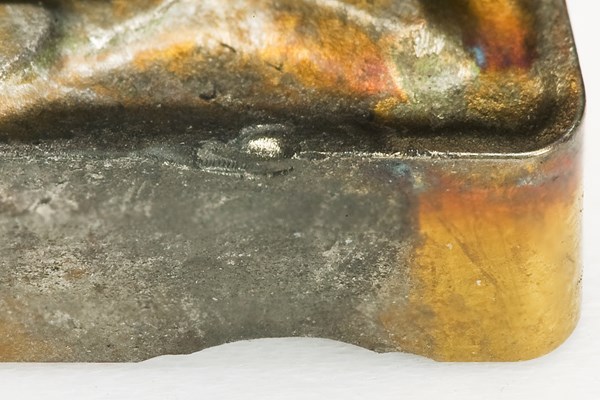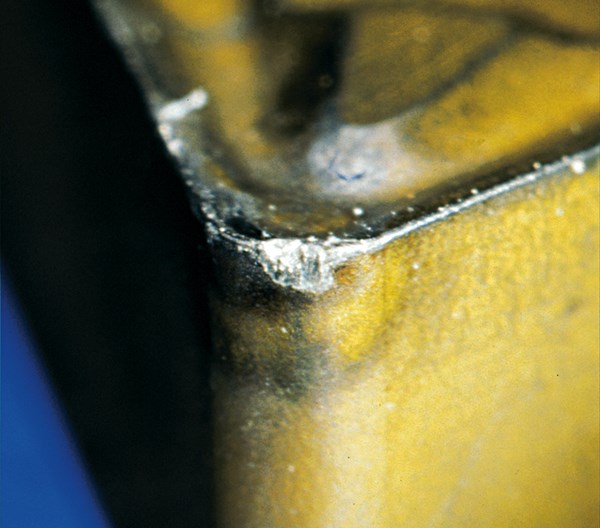Tool Life Varies When Machining Carbon and Alloy Steels
There are many ways tools can fail. This article discusses factors in the steel that can lead to failure.


Photos courtesy of Sandvik Coromant.
Tool life can vary when machining carbon and alloy steels despite the use of our best technology and our efforts to control our processes. This post discusses factors in the steel that can lead to tool failure. Here are six factors that can affect tool life in your shop:
Variations between suppliers. Suppliers’ melt processes, scrap practices, melt recipes and reduction in cold drawing and straightening practice can significantly affect the way the chip breaks, the resulting built up edge on the tool and the resulting surface finish, even though the grade is the “same.”
Variations in chemistry. A potential subset of variations between suppliers, the fact is that a plain carbon grade with 0.005 weight percent sulfur will not machine at all like the material with 0.025 weight percent sulfur.
Variations in grain size. While this factor is typically more relevant in stainless steels, when machining forgings, blocky structures resulting from excessive forging temperatures can result in inconsistent machining performance.
Variations in microstructure. In this case, it is not so much about the grain size, as it is about the structure present. This is particularly problematic in the ~0.40 weight percent carbon alloy grades such as 4037.
Decarburization or scaling on the work surface. Decarb can result is a carbon poor gummy surface, only to then transition into a fully carbon-containing microstructure. Scale on the work surface can result in excessive tool wear, because of the very high hardnesses of the various iron oxides that may be present (Hematite, the red oxide of iron, Fe2O3, has a microhardness of approximately 1030 DPH.
Deoxidation /high inclusion count. Free machining grades such as 12XX and 11XX steels are typically sold to a “coarse grain practice” with no deliberate additions of grain refiners or deoxidizers. Sometimes, you may find deliberate additions of Silicon to 1144 in order to improve the internal soundness of the steel. The resulting silicates can abrade the edge of the tool when running at the surface feeds expected for a resulfurized steel. The addition of aluminum as a grain refiner can cause rapid edge wear as well. Rarely, very rarely, one might encounter exogenous inclusions entrapped in the steel from melt and casting. These can be real showstoppers.
The takeaway: Purchasing the same item from different suppliers hurls the range of global variation at your machining operations. Standardizing on a single supplier for an item will allow you to get to a steady state in your process.
Originally posted on PMPAspeakingofprecision.com blog.










.jpg;maxWidth=300;quality=90)




